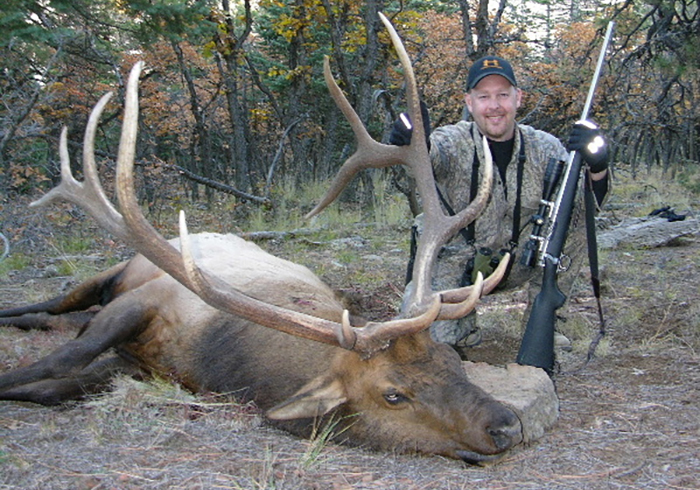The Often Overlooked Elk Season
When elk hunting is mentioned, most hunters envision golden aspen leaves gently blowing in the September wind, cool mountain mornings and the haunting sound of bull elk bugling as they round up harems of cows during the breeding season.
That is certainly a great time to hunt elk, but in most states, those early seasons are bowhunting only, and for many of us rifle hunters, we must wait until later in fall to pursue the noble wapiti. Wyoming has rifle elk seasons that start in early October, as do many of the units in New Mexico. On these hunts, you may catch the tail end of the “bugle,” but if you are not there that first week, you will probably not be able to locate bulls with your ears.

Montana rifle seasons are later October through November, and Arizona and New Mexico have some opportunities in November and December.
What these hunts have in common are that you will be pursuing post rut elk, and though in many locations the hunting can be excellent, tactics must be altered from typical early season hunts.
I really think the most difficult time to take down a good, mature bull is immediately after the rut. They have been rutting hard and have really run themselves down physically. And often for a week or more, they go find the most inaccessible canyon with lots of cover, and they just rest. They need to recoup, and though they do feed some, during this time, the big boys just want to be left alone and sleep.
This requires serious glassing and putting on many miles in hard-to-access areas for success; and a bit of luck always helps!
After this rest period, bulls will begin feeding a lot to build their bodies back up from the rigors of the breeding season and in preparation for the approaching winter when they need to be healthy and have fat stores to see them through.
This time is usually late October into December, and the later and colder it is, the more daylight activity you may see. Glassing mornings and afternoons is the name of the game, and often elk are herded back up, or you will find bulls in bachelor groups. This can be a fantastic time to harvest a really big bull, especially if there is snow.
Visibility is good and you can spot elk a long way off, but remember that the elk can also see better at this time of year when there isn’t nearly as much cover to hide hunters. Often shots can be longer during this time of year, and shooting cross canyon or from a mountain above a large meadow where elk are feeding are common occurrences.
For this reason, I prefer a flat-shooting caliber that still has a punch when it gets to its target, even at distance. The .300’s are good choices, but for these later hunts, the .338 Win is my top choice.
I like Winchester’s .338 Win cartridge loaded with 225-grain Accubond CT’s. This is a very accurate load out past 400 yards with its 2800 fps velocity and .548 ballistic coefficient; and it delivers plenty of energy when it hits and elk. The Accubond CT has excellent penetration and controlled expansion which causes devastating trauma, even on a big sturdy animal like a bull elk.
To make the most out of a late season hunt and really up your odds, practice at distances out to 400 or so yards, and then hope you can shoot an elk at half that. If you do have to take a longer shot, you will be prepared, and if you can get to 150-200 yards, it will feel like a chip shot.
There is something classic about taking a bull elk in the snow on a cold late fall day, and if you pick your location well, are persistent with your glassing, and have done your due diligence at the rifle range, you should be able to bring home a nice bull. You will cherish the memory of the hunt, and best of all feed your family and friends with some of the most delicious and healthy meats to be found anywhere on earth.




